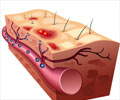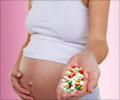Diagnosis of Reye’s Syndrome
Diagnosis of Reye’s syndrome follows the elicitation of a proper medical history and detailed physical examination. A number of blood tests (mostly to assess the function of liver) are ordered.
- Ammonia level as high as 1.5 times normal 24-48 hours after the onset of mental status changes is the commonest laboratory irregularity in Reye’s syndrome.
- Transaminases levels: The level of liver enzymes ALT (SGPT) and AST(SGOT) increase
- Bilirubin levels
- Lactic dehydrogenase (LDH) level: may be high or low
- Prothrombin time (PT) and activated partial thromboplastin time (aPTT): are prolonged
- Lipase and amylase: are elevated
- Serum bicarbonate: may be increased due to vomiting
- BUN and creatinine: elevated
- Glucose: level may be low (hypoglycaemia) especially in children younger than 1 year
- Anion gap and venous blood gas
- Urine specific gravity (increased) and ketones (ketonuria)
Liver biopsy (removal of a sample of liver tissue) may be done
Imaging modalities: Head CT or Head MRI; Electroencephalogram (EEG)
Spinal tap for spinal fluid analysis may be done
It is also important to rule out inborn errors of metabolism in children










